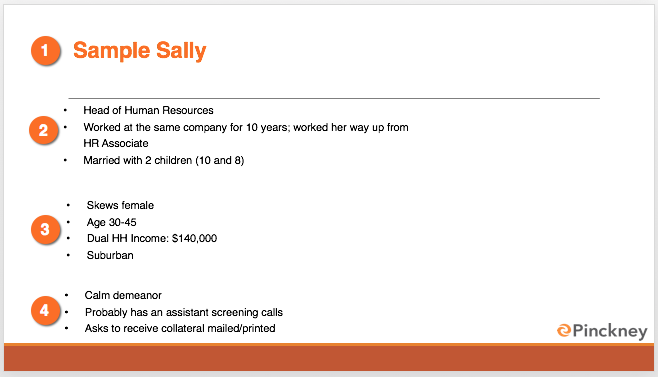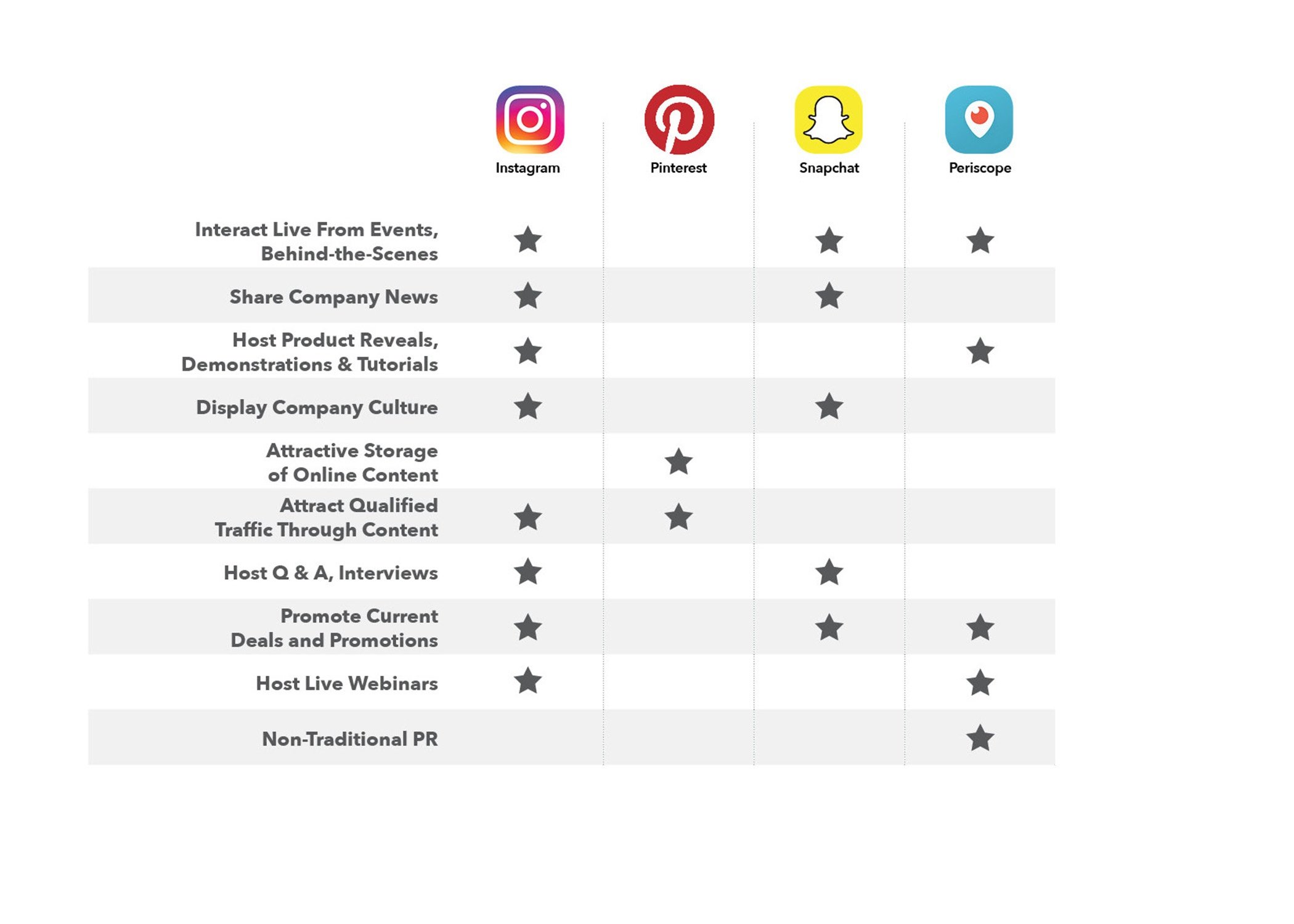The Definitive Guide to
B2B Non-Traditional
Social Media

What is Non-traditional Social Media?
We know what you're thinking.
Can you really get weird (creative + successful) with B2B social media marketing and be as engaging as a B2C marketing campaign?
The answer is ABSOLUTELY - and you can do it by using non-traditional social media!
Of course, we have our more traditional social media channels like Facebook, Twitter, and LinkedIn (as many marketers fondly refer to as The Big Three).
"The Big Three" are seen as more traditional because we’ve pretty much figured them out. We know all their little nuances including which audiences frequent which channels, how we should craft our messages, and how we can gain and measure major marketing successes that affect the bottom line.
This brings us to the next huge hurdle in marketing: non-traditional social media. By this we mean the group of social channels that are highly visual, highly engaging, and mostly appeal to niche audiences (Instagram, Snapchat, and Pinterest to name a few).

Now that the combination of technology and time has ushered in a new era of social media channels - informal and appealing, yet more complicated in nature, everyone is trying to gauge whether we as B2B marketers can tame and make use of them.
4 Major Implications for B2B Marketers
These channels signify the beginning of an era, impacting marketers in regards to: who's using them, how they're using them, and what they want to gain from them.
These implications, which we will elaborate on below, include:
- Audience
- Mobile
- Strategy
- Relationships
Knowing and acting on these 4 implications will allow you to leverage non-traditional social media in creative and successful ways.
1. Audience
Now, more than ever, you must have a keen understanding of who you want to reach with your marketing.
The majority of non-traditional social media channels have niche audiences. To get the most out of them, you must be able to align who you want to reach (your buyer personas) with the key demographics of the particular social channel you want to use.
Typically, the people that use these channels are younger. But as more of the younger generation (dare I say, millennials) move into management and decision-making roles, you’ll want to find ways to connect with them that won’t come across so traditional and overdone.
2. Mobile
You must optimize your online presence for mobile.
As of 2013, 71% of people use their mobile device to access some form of social media. And to further that statistic, most non-traditional social channels are optimized to only be used on a mobile device, i.e. SnapChat and Instagram apps.
Having a mobile-friendly website strategy is imperative if you want to use these channels to ultimately drive conversions, leads, and customer retention. This could include investing in responsive design for your website or making links easier to click on mobile devices.
3. Strategy
You have to be smart about non-traditional social media’s placement in your overall marketing strategy.
Ultimately, how these non-traditional channels are used is going to be different from business to business. Some companies will have non-traditional social tactics as a major part of their strategies, while others may use these tactics as supportive techniques.
What makes the most sense for a majority of B2B marketers is to use these tactics as a part of a larger strategy. Maybe you can use non-traditional social channels to serve a very specific purpose like product demos or hosting live webinars.
However you decide to incorporate non-traditional social into your strategy, be sure that it makes sense and sends the right message to the right people. There’s a comprehensive list of how you can use these channels towards the end of this page.
4. Relationships
Non-traditional social media is about relationship nurturing. You need to create or update your marketing and sales strategy to reflect this.
Relationship nurturing is a key factor in marketing and sales, especially in the B2B realm. If you don’t have a strategy that aims to generate leads and then build a relationship with them in an interesting and sincere way, you’re missing out on great potential.
Non-traditional social media is all about relationship nurturing. The nature of these channels allows you to engage with your buyer personas in a highly personable way that also adds value.
Taking an example from earlier in this post, doing partial product demos or webinars via non-traditional social will educate your buyer personas in a non-confrontational way - giving them just enough information to want to contact you for their needs. And if you’re successful, you’ll be able to build and nurture relationships with them that will eventually lead to lifelong customers.
User Demographics
Who's using these channels?
An important part of crafting a strategy for non-traditional social is making sure the user demographics of these specific channels match up with your personas.
| Periscope | Snapchat | ||
 |
 |
 |
 |
|
|
|
|
Personas
As mentioned above, building out personas is an important 1st step in incorporating these channels into your overall strategy.
Creating personas is a great way to:
- Guide targeted messaging on these channels. This will increase the chances of your target audience converting on your content.
- Establish a lead qualifying process and increase quality leads.
Check out a sample persona below. If you want more information on getting started with personas, click here or the image!
How to Leverage these Channels
Most of these channels can be used to achieve the same end. What’s important is posting relevant content on the channels that your audience frequents. Consider the options below when brainstorming how to best utilize these channels.
Click on the image for a download!
Conclusion
What are your thoughts on using non-traditional social media in B2B marketing efforts?
At Pinckney, we write about social media a lot because it’s a proven method to drive traffic and conversions.
If you’re really interested in how to leverage not only social media, but all aspects of an inbound campaign for your business, check out our Inbound Marketing Success Guide below.
The businesses we work with count on our specialization in building full-funnel campaigns that generate leads and revenue. Our firm is focused on building lasting, business-focused partnerships with the brands we serve that are built on long-term strategy, not short-sighted tactics. Clients tell us that they appreciate how we focus on their business and driving results with smart marketing, even on a tight budget.
Check us out at the Pinckney Marketing website to learn more.


